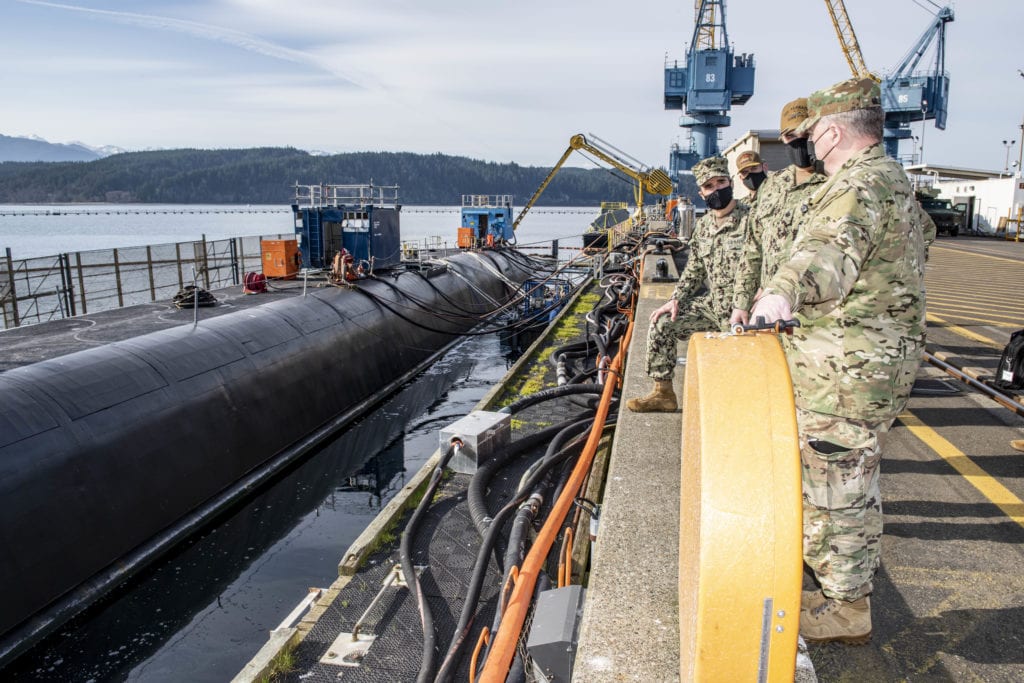
ARLINGTON, Va. — Two naval nuclear weapons deployed or planned are likely to survive cancellation efforts from Democratic members Congress, said the new ranking member of the House Armed Services Committee (HASC).
Mike Rogers, R-Alabama, speaking March 22 during a webinar of the Defense Writers Group, was asked by Seapower about the future of the W76-4 low-yield warhead deployed in 2019 on some Trident submarine-launched ballistic missiles — carried on Ohio-class ballistic-missile submarines — and the planned nuclear-armed sea-launched cruise missile (SLCM) called for in the Defense Department’s 2018 Nuclear Posture Review.
The NPR said that “a low-yield SLBM warhead and SLCM will not require or rely on host nation support to provide deterrent effect. They will provide additional diversity in platforms, range, and survivability, and a valuable hedge against future nuclear ‘break out’ scenarios.”
The review said the “SLCM will provide a needed non-strategic regional presence, an assured response capability. It also will provide an arms-control-compliant response to Russia’s noncompliance with the Intermediate-range Nuclear Forces Treaty, its nonstrategic nuclear arsenal, and its other destabilizing behaviors.”
The new HASC chairman, Rep. Adam Smith, D-Washington, has stated his opposition to the low-yield warhead and SLCM as being destabilizing to the nuclear balance.
“We’ll hold the line,” Rogers said, speaking of the congressional Republicans. “I’m sure there will be a big debate. We’ve got some people [opponents of weapons], as long as there are TV cameras in the room, they’re going to run their mouth, but I think we’ll have the votes.”
- Insitu Going Strong at 30, Focusing on Maritime Operations - April 8, 2024
- Navy Awards Boeing Additional Funds for MQ-25 Drones for Testing - April 3, 2024
- Benign 4th Fleet AOR Useful for Unmanned Vehicle Operationalization, Admiral Says - March 27, 2024






